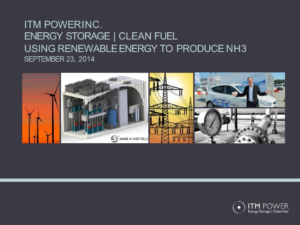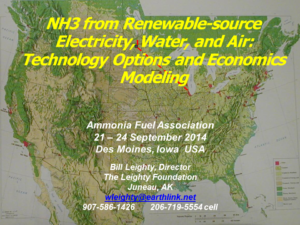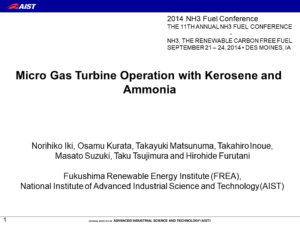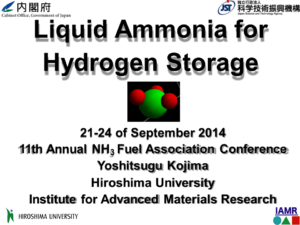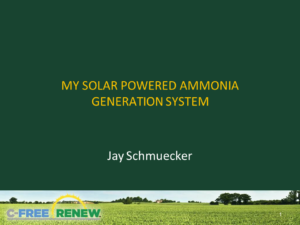Presentation
Using Renewable Energy to Produce NH3
Commercial production of Ammonia (NH3) is a large scale industrial process converting natural gas (or other fossil fuels) into gaseous hydrogen, which is catalytically reacted with nitrogen to form anhydrous liquid NH3. NH3 made from natural gas is responsible for approximately 5% of global natural gas consumption (around 2% of world energy). Hydrogen can be produced more simply and more sustainably by the electrolysis of water using renewable electricity. Thus decoupling NH3 production from fossil fuels and substantially decarbonising the process. This provides a means of utilising intermittent renewable electrical power to produce NH3 for use as a fertilizer, fuel…
